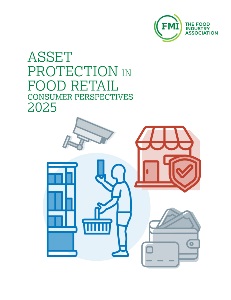Morning report: Corn, soybeans and wheat all test modest gains ahead of Friday’s session. (Comments are updated by 7:30 a.m. Central Time.)
Overnight trends:
Corn: Up 3 to 4 cents
Soybeans: Up 9 to 10 cents
Wheat: Up 3 to 7 cents
Losses in recent sessions may prompt some bargain buying on Friday, based on small gains captured in overnight trading. Grain prices slumped lower earlier this week, despite some optimistic export data and large flash sales. Prices have been hampered by lingering demand concerns in China, optimism for a renewed Black Sea transportation deal, and record-breaking production potential in Brazil.
Overseas stock markets were mixed. Asian markets closed with mild to moderate losses ranging between 0.1% and 0.6%. European markets trended around 1% higher in midday trading. And ahead of the opening bell, Dow futures added 144 points to 33,725 as investors weighed the potential for additional interest rate hikes and await the next round of Q4 earnings reports.
Energy futures were lightly mixed overnight. Crude oil dipped 0.25% lower to $81 per barrel. Diesel was also down around 0.25%, while gasoline firmed slightly. Volatile natural gas prices sank 3.75%, while safe-haven gold firmed slightly. The U.S. Dollar softened slightly.
The latest 72-hour precipitation map from NOAA shows that outside of some lake affect snows, not much moisture will land on the Midwest and Plains between today and Monday. Official 6-to-10-day forecasts show near-normal precipitation for much of the Corn Belt between November 23 and November 27, with colder-than-normal conditions likely for the eastern Corn Belt during this time. Warmer-than-normal conditions will be more prevalent farther west.
On Thursday, commodity funds were net sellers of soybeans (-6,000), soymeal (-1,000), soyoil (-5,000) and CBOT wheat (-5,500) contracts. Funds were roughly even when trading corn contracts yesterday.
Corn
Corn prices tested moderate gains of around 0.5% overnight, suggesting a round of technical buying may be in store for Friday’s session. It will be worth watching several factors moving forward, including South American production, export trends in Ukraine and future flash sales of U.S. grain (several happened earlier this week). Also keep in mind that the upcoming Thanksgiving holiday means there are only three open sessions next week.
Corn basis bids were steady to firm after improving 1 to 12 cents across four Midwestern locations on Thursday.
Corn exports reached 46.0 million bushels last week, which was slightly on the upper end of trade estimates ranging between 27.6 million and 59.1 million bushels. Cumulative totals for the 2022/23 marketing year are moderately below last year’s pace, with 195.5 million bushels.
Corn export shipments came in at 22.2 million bushels Mexico, China, Japan, Colombia and Jamaica were the top five destinations.
The U.S. Environmental Protection agency reported yesterday that the U.S. generated 1.24 billion ethanol blending credits, which was a modest improvement over September’s tally of 1.13 billion. The U.S. additionally generated 477 million biodiesel blending credits last month, down from September’s tally of 502 million.
Many operations end up “farming the alphabet,” according to David Kohl – including acronyms like PPP, SBA’s EIDL, WHIP payments, CFAP payments and other crop subsidies. “If the government alphabet is part of net farm income, then a deep dive needs to occur to determine the short and long run financial impact,” he says. Kohl takes a closer look in his latest Road Warrior column – click here to learn more.
Chinese corn imports in October reached 21.7 million bushels, per the latest available customs data. That was significantly below October 2021 levels. Year-to-date imports in 2022 are down 27.5% year-over-year after reaching 748.4 million bushels.
The preliminary report from the CBOT showed daily futures volume move to 318,861, with open interest falling 15,307 lower. Options volume was at 77,318 and slightly favors calls (40,786) over puts (36,532). Implied volatility for near-the-money December moved to 17.3%, and expire six days from now.
Soybeans
Soybean prices are hoping for a rebound on Friday, testing overnight gains of around 0.75%. Prices have generally been holding in a channel between $14.00 and $14.50 per bushel in November. This is an improvement from last month but still well below seasonal highs captured in mid-August.
The rest of the soy complex also trended moderately higher overnight. Soymeal futures were up around 0.75% and soyoil prices firmed 1% higher.
Soybean basis bids were steady to firm after trending 5 to 20 cents higher at three Midwestern locations on Thursday.
Soybean export sales jumped to 111.3 million bushels last week. That was well above the entire range of trade estimates, which came in between 33.1 million and 66.1 million bushels. Cumulative totals for the 2022/23 marketing year are still moderately behind last year’s pace, with 535.9 million bushels.
Soybean export shipments were also strong, with 76.5 million bushels. China ac-counted for more than half of that total, with 48.1 million bushels. Germany, Mexico, South Korea and Taiwan filled out the top five.
As the 2022 crop season winds to a close, so will our regular feature “Feedback from the Field,” which is lovingly crafted and organized by Farm Futures grain market analyst Jaqueline Holland. “I am eternally grateful to you for providing the insights that helped other growers and market players understand how this year’s growing season progressed,” she says. Here’s your last chance to catch up on the latest farmer anecdotes and view the interactive map – click here to get started.
Argentina’s Buenos Aires grains exchange reported yesterday that the country’s soybean acres may face cuts if rains don’t arrive soon. Plantings are only 12% complete, compared to 29% at the same time a year ago. Current acreage projections are for 41.3 million acres. Argentina is the world’s No. 1 soymeal and soyoil exporter.
The preliminary report from CBOT showed daily futures volume move to 157,988 with open interest firming by 5,433. Options volume was at 38,423 and slightly favors puts (20,381) over calls (18,042). Implied volatility for near-the-money January contracts moved to 16.4% and expires in another 34 days.
Wheat
Wheat prices tested modest overnight gains as traders may be shifting focus from a renewed Black Sea shipping deal to worries about production challenges in Argentina (drought) and Australia (flooding). Prices had been improving consistently between mid-August and mid-October but have been struggling to find additional traction since then.
Wheat export sales only reached 10.7 million bushels last week. Analysts were generally expecting a bigger haul, with trade estimates ranging between 9.2 million and 20.2 million bushels. Cumulative totals for the 2022/23 marketing year are slightly behind last year’s pace, with 333.8 million bushels.
Wheat export shipments were also lackluster, with 4.4 million bushels. The Philippines topped all destinations, with 2.3 million bushels. Mexico, Colombia, the United Arab Emirates and Vietnam rounded out the top five.
Prolonged drought conditions in Argentina has the country’s Buenos Aires grains exchange slashing its estimates for the 2022/23 season by nearly 40% to 455.6 million bushels. Harvest is 10% complete through Wednesday.
Due to high commodity prices, India’s wheat and canola acres are up 15% year-over-year, per the latest data from the country’s farm ministry. Inventories are at a multiyear low, creating additional pressure to replenish domestic stocks. India is the world’s No. 2 producer of wheat.
French farm office FranceAgriMer reported that 97% of the country’s 2022/23 soft wheat crop has been planted as of November 14. The country struggled with widespread drought last season, but so far, weather has been mostly cooperative. Nearly all (98%) of the crop is currently rated in good-to-excellent condition. France is Europe’s top wheat producer.
China’s wheat imports in October jumped 157% year-over-year to 45.6 million bushels. Cumulative wheat imports in 2022 are still 2.6% below last year’s pace, with 289.2 million bushels.
The preliminary report from CBOT showed daily SRW volume move to 98,832, with open interest trending 1,316 higher. Options volume moved to 28,495 and favors puts (14,778) over calls (14,778). Implied volatility for December near-the-money options is at 31.6% and expires in six days.
Volume in HRW wheat moved to 40,734, with open interest trending 2,233 lower. Options volume is at 1,855 and slightly favors puts (958) over calls (897).
Settlement Prices for Key Commodities
High
Low
Last
Change
Corn $/bushel
22-Dec
668.25
654.75
667.5
2.5
23-Mar
669.5
657
669
1.25
Soybeans
23-Jan
1431.75
1406.75
1417
-11.5
23-Mar
1437.25
1412.75
1422.25
-11.5
Soymeal $/ton
23-Jan
405.2
400
402.5
-1.6
Soyoil cents/lb
23-Jan
72.4
69.55
70.22
-1.74
Wheat $/bushel
22-Dec
818.25
793.75
806.75
-11
23-Mar
837.25
814.5
825
-12.75
KC Wheat
22-Dec
955.5
933
938
-18.5
23-Mar
945.75
922.5
929
-18.25
MPLS Wheat
22-Dec
966
948
953.75
-12.5
23-Mar
975
956.5
962
-13.5
Live Cattle cents/lb
22-Dec
152.825
151.65
152.65
0.85
Feeder Cattle cents/lb
23-Jan
180.275
177.575
179.9
2.425
Lean Hogs cents/lb
23-Feb
91.35
89.475
90.975
0.625
Crude Oil $/barrel
*Energy prices may not represent final settlements
22-Dec
85.45
81.4
81.83
-3.76
Diesel
22-Dec
3.6292
3.4768
3.5228
-0.0908
Unleaded Gasoline $/gallon
22-Dec
2.5145
2.4357
2.4605
-0.0475
Natural Gas
23-Jan
6.912
6.554
6.73
0.123
U.S. Dollar Index
22-Dec
107.14
105.975
106.59
0.438
Gold $/ounce
22-Dec
1777.6
1756.6
1760
-13
Copper
22-Nov
3.696
3.69
3.69
-0.098
Fertilizer Swaps
(as of 11/11)
DAP Tampa-index
700.0
0
DAP-New Orleans
764.5
-26.46
Urea-New Orleans
583.1
-28.66
Urea-Middle East
587.5
-60
Urea-Black Sea
585.0
35
UAN (32%) New Orleans
599.7
-14.88
Get our top content delivered right to your inbox. Subscribe to our morning and afternoon newsletters!





